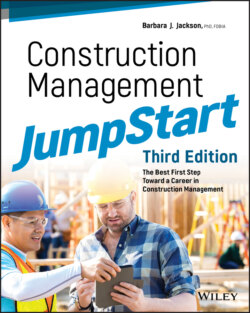Читать книгу Construction Management JumpStart - Barbara J. Jackson - Страница 15
base isolators
ОглавлениеLarge shock absorbers made of alternating layers of rubber and steel attached to a building's foundation to allow movement of the structure without causing damage.
Let's consider another example. In 2002, the third-largest cathedral in the world and the first cathedral to be built in the United States in more than a quarter of a century was constructed in downtown Los Angeles. Designed by the world-renowned Spanish architect Professor Jose Rafael Moneo, the Cathedral of Our Lady of the Angels stands 11 stories tall and weighs a whopping 151 million pounds. The cathedral rests on 198 base isolators so that it will float up to 27 inches in any direction during an 8-point magnitude earthquake. It has been stated that the design is so geometrically complex that none of the concrete forms could vary by more than 1/16th of an inch. Having visited the cathedral several times during its construction and been witness to the extraordinary efforts made by the construction team to ensure the quality of the design along with the requirements for the budget and schedule, I was very disappointed, again, not to find one mention of the contractor, Morley Builders, on the cathedral's website.
Consider any of our architectural jewels: the Willis Tower (formerly known as the Sears Tower) in Chicago, the Space Needle in Seattle, the Transamerica Pyramid in San Francisco, and the Empire State Building in New York. With a little research, you would find that each of these buildings is easily identified with their designers. However, it would be a real challenge for you to discover that Morse Diesel International, Inc., was the builder of the Sears Tower, that Howard S. Wright Construction built the Space Needle, that the general contractor for the Transamerica Pyramid was Dinwiddie Construction (now Hathaway-Dinwiddie), and finally that Starrett Brothers & Eken, Inc., was the builder of the Empire State Building.
To me, not recognizing and acknowledging the contractor along with the designers of these buildings is a grave injustice—but, unfortunately, indicative of how our society views the construction industry. Apparently, to some people it is not very important. Well, let me explain why it is very important. Drawing a pretty picture on paper or calculating a complex engineering formula does not make a building real—construction does, and that takes tremendous creativity, ingenuity, tenacity, skill, blood, sweat, and tears. So remember, no matter how outstanding the design, it is not architecture until somebody builds it! “Just” construction? I don't think so!
